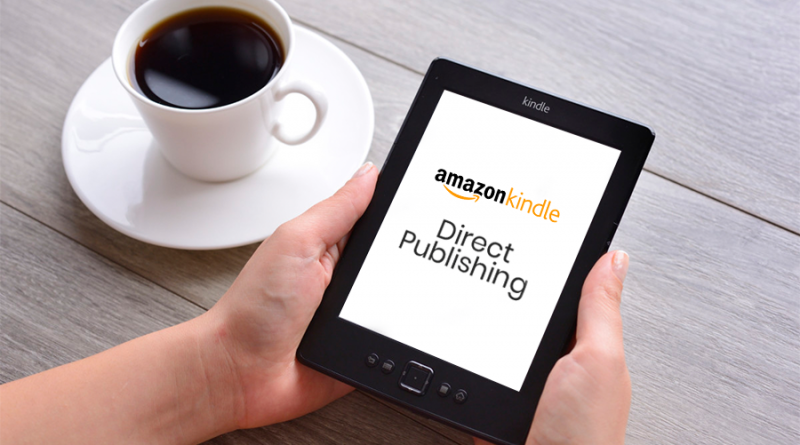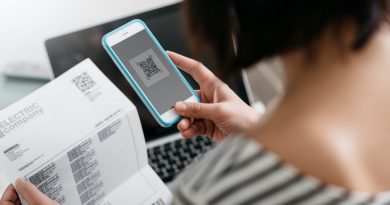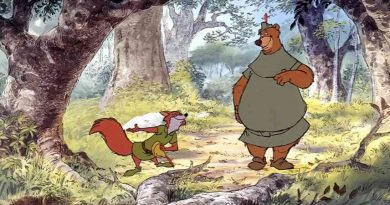What Is Kindle Direct Publishing?
Kindle Direct Publishing (KDP) is a way for authors to sell and publish their e-books, physical books, and audiobooks through Amazon, Audible, and iTunes. Amazon programs pay authors either per book sold or per page read. It’s free to get started selling, and you’ll only pay fees out of royalties earned on books sold.
How Kindle Direct Publishing Works
KDP provides authors access to an entire toolkit for formatting and publishing their work in less than a day. It’s both a publishing company and a platform for selling. Since any book an author creates and sells through KDP is considered self-published, it also means that you have complete creative freedom with your book. Of course, you’ll have to make sure you’re not publishing anything illegal or copyrighted.
After an author has written a manuscript, they can create an account through KDP. This is an Amazon service that allows authors to sell their physical books, e-books, and audiobooks through Amazon.com, Audible, and iTunes. Customers can view them or listen to books using a desktop, smartphone, or a Kindle, which is an electronic device made specifically for digital books.
In addition to KDP making it quick and easy to publish a book, authors have access to 95 million Amazon Prime members. However, a customer doesn’t need to be a Prime member to purchase a book created through KDP. No matter what type of Amazon, Audible, or iTunes account the buyer has, they can read KDP books on any number of devices—smartphones, laptops, and e-readers like Kindles or Amazon Fire tablets.
Royalties pay out to authors any time a book sells or gets checked out, depending on which Amazon program they access the book through. For example, Amazon offers programs that allow readers to check out a book, like a virtual library. Instead of an author getting paid on a book sale, they get paid per pages read—even if the reader doesn’t finish the entire book.

Your Bookshelf within KDP is where you’ll upload the content for your book
Who Kindle Direct Publishing Is Right For
Self-publishing a book using KDP is an attractive option because it’s fast, easy, and gives authors access to an enormous number of buyers. KDP is a popular platform because it allows people to showcase their talents and abilities in an e-book, physical book, or audiobook. Some authors even do all three. Compared to traditional publishing, it’s much faster, and you’ll typically see higher profits per book when using KDP.
KDP is best for people who are:
- Entrepreneurs: Many entrepreneurs choose to use their self-published books as business cards. It’s an attractive gateway that showcases an entrepreneur’s skills and provides an opportunity to later enroll readers into other programs, such as a coaching package or online course.
- Writers: On many writers’ bucket lists is to publish a book. KDP makes it fast and easy to check this one off the list without a lot of financial investment.
- Experts: If you’re an expert in your field, no matter the niche, there’s a chance someone wants to hear what you have to say. Publishing through KDP is a viable option to get this done quickly.

Amazon gives authors a bio page so that readers can see their other work; they can even follow authors so that they’re notified as soon as new work is published
Kindle Direct Publishing Options
By using Kindle Direct Publishing, you’ve got several options for publishing your book. If you grant exclusive distribution rights on your digital and audiobooks to Amazon, known as Kindle Direct Publishing Select (KDP Select), you’ll earn a higher royalty rate. This exclusivity period lasts 90 days, and authors can auto-renew for another 90 days or choose to opt-out. If you choose to sell your digital or audiobook on other platforms, you’ll earn a lower royalty rate.
Options for selling through Kindle Direct Publishing include print, digital, and audio.
1. Print

Each of Vickie Gould’s books are published through Kindle Direct Publishing
Kindle Direct Publishing allows you to sell print-on-demand physical books to Amazon customers. This is an ideal option for authors who want physical books to use at in-person events. These events include book signings, conferences, trade shows, and gift-giving at holiday parties. Since these books are printed, authors will have smaller profit margins than using its digital counterparts.
2. Digital
Digital books are a popular way to keep more of your profit when using Kindle Direct Publishing. It’s free to publish a book digitally, and then you’ll just pay a small fee from the royalties you receive from digital sales. Customers purchase books to read on the Kindle app on their smartphone or desktop, or they can read it through an actual Kindle.

An example of a Kindle library on the MacBook Kindle app
3. Audio
You can create a professional audiobook using the Audiobook Creation Exchange (ACX), which is an Amazon company. Once done, you’ll sell it through Amazon, Audible, and iTunes. This is an attractive option for authors who don’t have content that requires a reader to stop and write to reflect. Many people listen to audiobooks while commuting or at work, making it difficult to pause to take notes.

Audible listeners purchase credits or buy an audiobook outright
Kindle Direct Publishing Costs
It doesn’t cost anything upfront to sell your book through Kindle Direct Publishing. You’ll keep either 35% or 70% of book sales, depending on whether or not you’re enrolled in KDP Select, which outlines a 90-day exclusivity clause. You’ll also pay a small fee for printing a physical book, and delivery charges on both physical and digital books. You can edit your book for free within Kindle Create, or you can hire someone to do it for you. In addition to KDP costs, you’ll have to edit your manuscript, design a cover, and market your book.
Fees to consider when using Kindle Direct Publishing include:
- Printing costs: If you’re publishing a physical book, you’ll pay a small fee each time a book is purchased since they’re printed on-demand. Fees depend on the number of pages, color, and list price. Download the printing cost calculator to see what your fee is.
- Editor: You can edit the book yourself or hire an editor to do it for you. You’ll pay around $25 per hour for an editor. You can find one on Fiverr or Freelancer.com.
- Fees: To release an e-book, you’ll pay fees of 15 cents per megabyte of file size, plus delivery fees that vary by country for any e-books priced $2.99 to $9.99. You don’t have a delivery fee outside of those prices. You’ll keep either 35% or 70% of book sales.
- Formatting: To format a book, people pay freelancers, on average, $500 to $1,000. You can format the book yourself or use a freelance marketplace.
- Book cover design: If you don’t design the cover yourself, you can hire a graphic designer to make one. These cost several hundred dollars up to thousands, or you can use a freelance marketplace such as Fiverr.
- Marketing: You’re more likely to get sales when you promote your book. You can do this through a book launch team, through advertising on social media for as little as $5 per day or running promotions through Amazon. Most Amazon promotions will only reduce your royalty rather than cost anything upfront.

To calculate how much your physical book will cost based on print settings, you’ll need to download an Excel spreadsheet from Kindle Direct Publishing
Kindle Direct Publishing Features
Amazon offers many different programs for authors to promote their digital and physical books through Kindle Direct Publishing. These programs include Kindle Unlimited, Kindle Direct Publishing Select, Kindle Countdown Deals, Kindle Free Promotions, and Kindle Owners Lending Library. Some of these programs allow authors to earn a higher royalty than others but have exclusions to watch out for.
Kindle Unlimited
Kindle Unlimited is a subscription service where people pay $9.99 per month to read an unlimited number of 1.4 million books available on Kindle Unlimited. They don’t have to be Amazon Prime members to subscribe. Because they’re paying a fixed fee for the service, many readers choose to skim through books and read just a few pages before committing to reading an entire book.
The ability to glance through an e-book quickly without buying it works out great for readers, but it might not be the best situation for authors. An author may only earn royalties on a few pages rather than the entire book since it pays per page read.
The Kindle Direct Publishing Global Fund (KDP GF) gets announced at the end of each month. This determines how much each title available has earned its authors. A total of $25.8 million paid to authors in August 2019 and gets split up by how many pages a KU subscriber read. In this instance, Amazon paid .004387 of a cent per page read. If an author has a 400-page book and someone reads the book cover-to-cover, that’s $1.75 for the author.
Kindle Direct Publishing Select
By enrolling in KDP Select, you’ll benefit from increased royalties for sales in certain countries, such as the United States and Canada. However, you can’t distribute your books on any other platforms other than Amazon’s Audible or Kindle departments.
It’s important to note that a customer can read your book as many times as they like, but you’ll only get paid for the number of pages they read the first time they read your book. It could potentially take months for someone to read your book, and you’ll only get paid once they do.
Kindle Countdown Deals
One week every 90 days, authors can discount their book through a countdown deal. Authors still earn a 70% royalty on the discounted price even if it falls below $2.99, which is when an author would usually earn only 35% royalties. To use countdown deals, you’ll need to participate in KDP Select.

You can tell which books are exclusive to Amazon by the “Kindle Unlimited” logo, and each of these are listed as countdown deals
Kindle Free Promotions
An author can make their book free to purchase, which is often done as a promotion tool to get more reviews. It is also used to boost rankings on bestsellers lists. When offering a free promo, you won’t get royalties during that period.
Authors can run a free promotion for up to five days in a variety of timeframes. They can use all five days at once, multiple days in a row, or one day at a time. You can’t roll over unused days. You’ll also have to participate in KDP Select to run a free promotion.
Kindle Owners Lending Library
Similar to KU, the Kindle Owners Lending Library (KOLL) allows readers to check out one book per month without returning the digital book by a specific date. This is available to all Amazon Prime subscribers without an additional fee, with a caveat. You can only borrow these books to read on your Kindle e-reader, Fire tablet, or Fire phone. It won’t work from your Android or iPhone Kindle app. Authors are paid per page read according to the KDP GF.
Pros & Cons of Kindle Direct Publishing
Using Kindle Direct Publishing to publish your book allows you to earn royalties from one of the largest ecommerce sites in the world. It’s very quick to get started, and Amazon provides a range of easy-to-use tools. On the other hand, printing a physical book can eat into profits. You’ll also contend with exclusivity clauses and only get paid for each digital page read, rather than an entire book, for certain KDP programs.
Pros of Kindle Direct Publishing
There are many benefits to using Kindle Direct Publishing, and they include:
- Royalties: Authors earn 35% and may be eligible to earn 70% based on certain criteria such as list price and sales region. For a paperback book, authors earn 40% to 60%, depending on the distribution channel.
- Quick and easy: If you’ve already written your book, you can publish it using Kindle Direct Publishing within 24 hours. This differs from traditional publishing, where it can take years. Amazon also provides tools to help format and market your book.
- Fees: It is completely free to list an e-book, although you’ll give a portion of your royalties to Amazon. If you’re printing a book, you pay nothing up front, and the printing fees are taken from your royalties.
Cons of Kindle Direct Publishing
The cons of using Kindle Direct Publishing include:
- Fees: It’s free to publish a book on Amazon using Kindle Direct Publishing. However, you’ll pay printing fees out of your royalties if you’re publishing a physical book. These fees vary, so check the printing cost calculator to determine what your printing settings will cost per book.
- Exclusivity: If using Kindle Direct Publishing Select, you can’t distribute your book digitally anywhere else, including your own blog or website. You can, however, print it in physical format elsewhere for distribution.
- Pay-per-page read: If you have an e-book through KU or KOLL, you don’t get paid for the entire book purchase since users check out books and return them. Instead, you’ll get paid for each page read.
Example of Royalties Earned Under KU and KOLL
|
Royalties Earned* |
Number of Pages Read |
Number of Times Read |
Book Length |
|---|---|---|---|
|
$1,000 |
100 |
100 |
100 |
|
$2,000 |
200 |
100 |
200 |
|
$1,000 |
100 |
100 |
200 |
*If the KDP Global Fund is at $10 million. Amazon announces the size of the previous months’ KDP Global Fund, which is the allotment of money available to pay out to authors whose titles are on KU and KOLL.
KDP GF x total pages read / total available pages = royalties earned
Alternatives to Kindle Direct Publishing
If you’re not ready to publish your book through Amazon, there are other ways to share your work. These approaches include traditional publishing, self-publishing through another platform, and blogging. Some publishing avenues are easier than others and allow you to get started relatively quickly. Traditional publishing is exponentially more difficult and could take years to get published, if at all.
To publish your book without Kindle Direct Publishing, consider one of several alternatives.
Traditional Publishing
Publishing a book traditionally involves finding a literary agent and a publisher. Some agents will have you send a book proposal before signing with them while others wait to work on the book proposal with you. These book proposals are usually 10 to 15 pages long, not including sample chapters. Your agent will pitch your book proposal to many different publishers. If you land a book deal, you’ll likely have to relinquish your idea of a cover or title since publishers typically choose these based on what they know sells best. They’ll also control the rights to your book.
Once you’ve submitted a finished and edited manuscript, it’s usually 24 months before your books start to appear in book stores. You’ll also have to market your book heavily. For this reason, traditional publishers prefer authors with already-established audiences, such as those found in your email list and through your following on social media.
Blogging
While not necessarily a way to publish a physical book, you can create blog posts. Many bloggers will start here, and then once they have enough content, they’ll turn it into a book. Alternately, they’ll start blogging and write high-level content in blog posts and later write more in-depth content for a book.
Self-publish Through Another Platform
There are many different alternatives to self-publishing. The most popular platforms outside of KDP include Apple iBooks, Barnes & Noble Nook, Google Play, and Rakuten’s Kobo. Most of these options are wide open for self-publishers, aside from Google Play, since it’s only taking on a limited number of publishing accounts. You’ll have to fill out its online interest form to join the Google Play waitlist.
Kindle Direct Publishing Frequently Asked Questions (FAQs)
This section includes the most frequently asked questions about Kindle Direct Publishing.
Can you get rich from writing a book?
You can, but that’s unlikely. Most books sell fewer than 200 copies, including copies sold to the author themselves. Once you publish a book, you’ll still need to heavily market it through social media, book signings, and ads. Savvy authors will use their self-published book to then upsell readers to different programs and services, such as their own coaching program or course.
Is it better to self-publish or get a publisher?
This entirely depends on what your motive for publishing a book is. There is an element of prowess to get a book publishing deal. However, a traditional publisher will typically take a much higher percentage of book sales compared to self-publishing. When self-publishing, you also keep control of the title and content. It will also take you much less time to publish than going through a publisher. With either option, you’ll still have to promote the book heavily.
When does Amazon pay Kindle Direct Publishing royalties?
You’ll get paid approximately 60 days after the end of the month in which your royalties are earned. For example, you’ll receive payment in November for royalties earned in September, provided you meet the minimum payment threshold. This threshold is $100 for both checks and wires. If you get paid via automated clearing house (ACH), there is no minimum, and you’re paid in full monthly.
Bottom Line: What Is Kindle Direct Publishing?
In as little as a day, your edited manuscript can go live on Amazon, Audible, or iTunes using Kindle Direct Publishing. The process of publishing your book on KDP doesn’t cost anything, although you’ll pay fees out of your royalties when you sell a book. To sell your book, however, you’ll need to promote and market it heavily.



